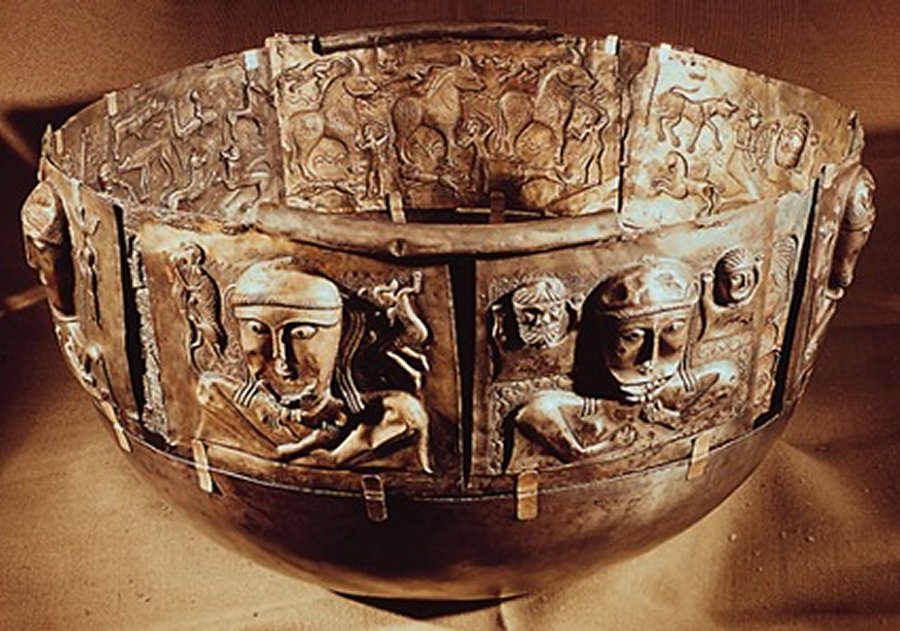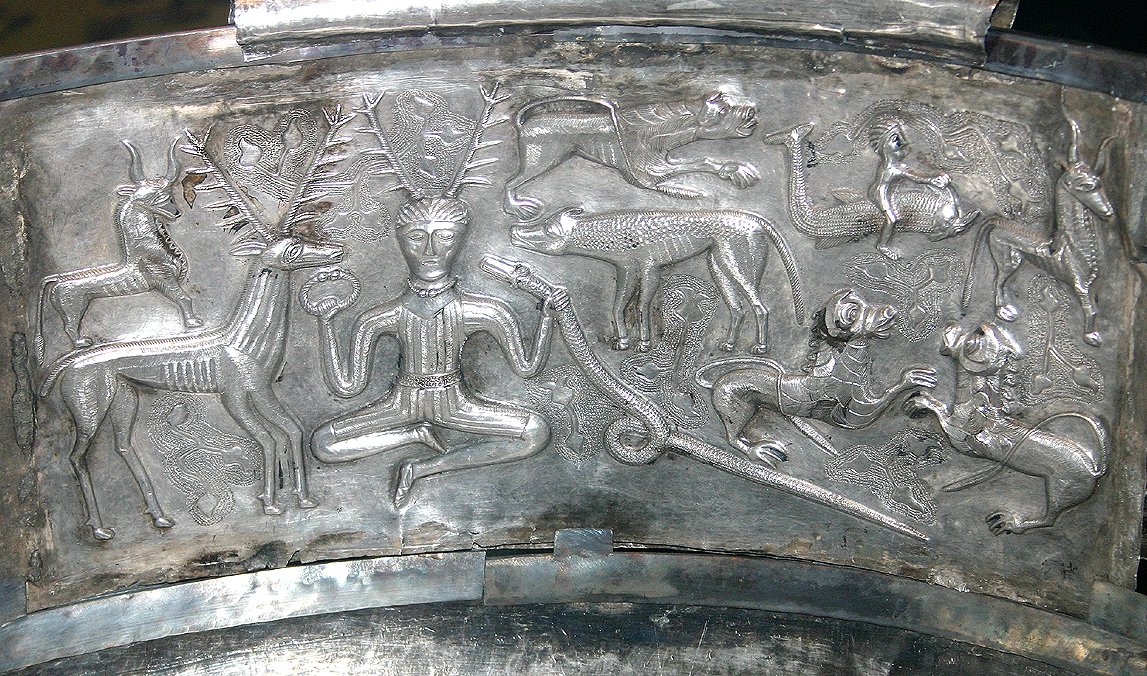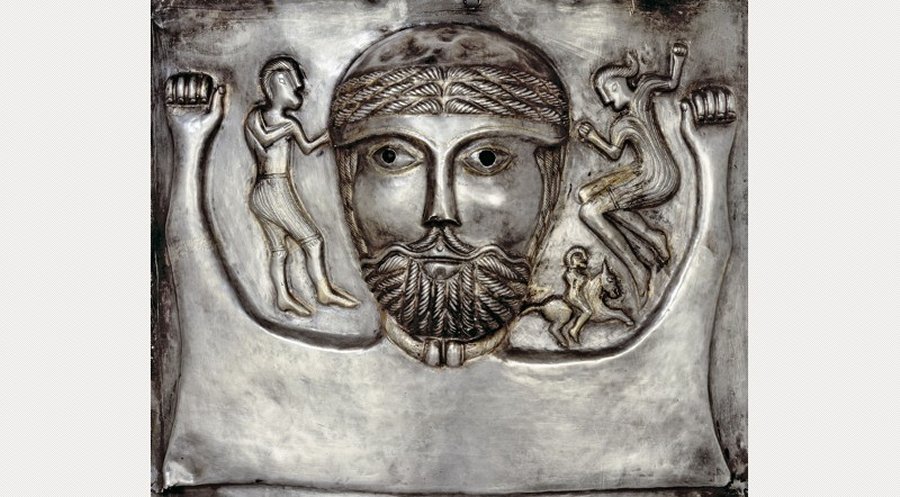Gundestrup Cauldron: Great Gilded Silver Vessel Decorated With Scenes Derived From Celtic Mythology
A. Sutherland - AncientPages.com - Among the most interesting archaeological finds that has been at times associated with Celtic culture is the Gundestrup Cauldron, a magnificent vessel made from richly decorated plates of silver that were assembled into a single cauldron.
However, the place where the artifacts was discovered, was never inhabited by the Celts.
Was the artifact manufactured at a location somewhere in Central Europe? Is it a result of cultural contacts between the Thracians and Celts in Bulgaria?
The almost 9 kg heavy cauldron is decorated with cult images difficult to interpret. On the outside is seen divine heads flanked by small figures; the main cult was an important element in the Celtic religion. The inside shows inter alia sword heroes confronting a procession of fabulous creatures (possibly unicorns). The National Museum, Copenhagen.
The Gundestrup Cauldron is the largest single silver object known from the La Tene era, when La Tène Culture flourished from about 500 BC to the Roman conquest in the 1st century BC, in several countries such as Belgium, eastern France, Switzerland, Austria, Southern Germany, the Czech Republic, Poland, Slovakia, Slovenia, Croatia and parts of Hungary and Romania.
It is generally agreed that the Gundestrup Cauldron dates to the mid-2nd century BC, but its manufacturing place and time have been a matter of much debate over the course of the last century.
The cauldron was found in pieces in 1891, in a bog at Gundestrup in Northern Jutland, Denmark, in a region that has never been associated with Celtic habitation. The artifact weighs 9 kg and consists of 14 plates, is 42 cm high and 69 cm in diameter; it has round bottom, with a double upper part composed of the relief-filled outer and inner plates.
The clearest image of Cernunnos is found on the silver votive cauldron, the Gundestrup Cauldron, discovered in Denmark which shows him seated, wearing a stripy close-fitting tunic and trousers, with a royal torc or neck-ring about his neck. In one hand he holds up another torc while in the other he holds a ram-headed snake. (At display at the National Museum (Nationalmuseet) in Denmark). photo via wikipedia
The outside has originally consisted of eight almost square tiles, seven of which have been preserved; each of these adorned by an idol-eye glass of additions. The inside consists of five plates adorned with idols, hunting and sacrificial scenes. The base plate is different from the others by its high relief and exceptional artistic quality.
Interestingly, the silver working of the artifact is not considered to represent typical Celtic metallurgy, but there is also some evidence that suggests considerable Celtic influence, especially in the images depicted on the cauldron that seem to be derived from Celtic mythology.
Moreover, analyses of both the silver and the tin that were used to hold the plates together, clearly indicate that metalwork originates from regions of Europe usually associated with Celtic habitation.
Gundestrup Cauldron, one of the scenes. © The National Museum of Denmark
Was the cauldron produced by Thracian smiths at the request of a Celtic tribe in Gaul? It is unknown how the artifact came to be in Denmark but there are different suggestions and one of them is that it was looted and then transported to Denmark by the Cimbri, a Germanic tribe.
A Greek geographer, philosopher, and historian, Strabo, and Tacitus, a historian of the Roman Empire, identify the Cimbri people with a group living in Jutland, but strong evidence for this connection does not exist.
The commonly accepted thesis that the Gundestrup artifact was manufactured in Thracian southeast Europe was recently questioned.
Silversmithing was a speciality of the region, researchers say, but this particular skill was developed in Thrace in the 5th and 4th centuries BC - much earlier than the proposed date for the cauldron.
Wherever the artifact was made and whatever influences its rich mythological imagery contains, the Gundestrup vessel must have been an important ritual object.
Written by A. Sutherland - AncientPages.com Staff Writer
Copyright © AncientPages.com All rights reserved. This material may not be published, broadcast, rewritten or redistributed in whole or part without the express written permission of AncientPages.com
More From Ancient Pages
-
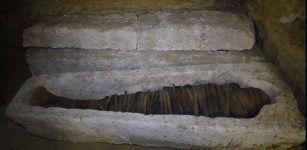 Tombs With Sarcophagi Of High Priests Including One Dedicated To Sky God Horus Unearthed In Egypt
Archaeology | Jan 31, 2020
Tombs With Sarcophagi Of High Priests Including One Dedicated To Sky God Horus Unearthed In Egypt
Archaeology | Jan 31, 2020 -
 On This Day In History: Treaty Of Worms Signed Between Great Britain, Austria And The Kingdom Of Sardinia – On Sep 13, 1743
News | Sep 13, 2016
On This Day In History: Treaty Of Worms Signed Between Great Britain, Austria And The Kingdom Of Sardinia – On Sep 13, 1743
News | Sep 13, 2016 -
 Ancestors Of The Irish And Scots Came From Biblical Lands And Ancient Egypt – Myths, History And DNA
Civilizations | Jul 14, 2020
Ancestors Of The Irish And Scots Came From Biblical Lands And Ancient Egypt – Myths, History And DNA
Civilizations | Jul 14, 2020 -
 Lady Trieu: Fierce Warrior, Rebel, Freedom Fighter And National Hero In Vietnam
Featured Stories | Feb 26, 2019
Lady Trieu: Fierce Warrior, Rebel, Freedom Fighter And National Hero In Vietnam
Featured Stories | Feb 26, 2019 -
 Thousand-Year-Old Sarcophagus Discovered In Odense
News | Sep 28, 2015
Thousand-Year-Old Sarcophagus Discovered In Odense
News | Sep 28, 2015 -
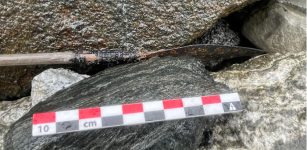 Arrow Pre-Dating The Vikings Discovered After Being Lost In The Ice For 1,500 Years
Archaeology | Aug 25, 2022
Arrow Pre-Dating The Vikings Discovered After Being Lost In The Ice For 1,500 Years
Archaeology | Aug 25, 2022 -
 Strange Mummies Of Venzone: Ancient Bodies That Never Decompose Remain An Unsolved Mystery
Featured Stories | Oct 22, 2018
Strange Mummies Of Venzone: Ancient Bodies That Never Decompose Remain An Unsolved Mystery
Featured Stories | Oct 22, 2018 -
 Massive Ancient Fortifications Reveal Poznan Was Poland’s First Capital
Archaeology | Jul 2, 2020
Massive Ancient Fortifications Reveal Poznan Was Poland’s First Capital
Archaeology | Jul 2, 2020 -
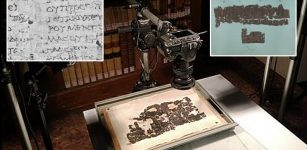 Carbonized Herculaneum Papyrus Begins Revealing Its Ancient And Historical Secrets
Artifacts | Apr 24, 2024
Carbonized Herculaneum Papyrus Begins Revealing Its Ancient And Historical Secrets
Artifacts | Apr 24, 2024 -
 Rare Neolithic Underwater Textiles And Dwellings Discovered At La Marmotta Near Rome
Archaeology | Jun 6, 2023
Rare Neolithic Underwater Textiles And Dwellings Discovered At La Marmotta Near Rome
Archaeology | Jun 6, 2023 -
 Was King William II Murdered In The New Forest?
Featured Stories | Aug 5, 2021
Was King William II Murdered In The New Forest?
Featured Stories | Aug 5, 2021 -
 Mabon Festival And The Autumn Equinox Celebrated By Pagans
Ancient Traditions And Customs | Sep 19, 2024
Mabon Festival And The Autumn Equinox Celebrated By Pagans
Ancient Traditions And Customs | Sep 19, 2024 -
 Oldest case of leukemia found on 7,000-Year-old skeleton
News | Aug 23, 2015
Oldest case of leukemia found on 7,000-Year-old skeleton
News | Aug 23, 2015 -
 Surprising Discovery Of Rare Turtle Statue Under Bayon Temple In Angkor, Cambodia
Archaeology | May 2, 2024
Surprising Discovery Of Rare Turtle Statue Under Bayon Temple In Angkor, Cambodia
Archaeology | May 2, 2024 -
 Ice Age Engraved Stones, Tools Unearthed At Jersey Hunter-Gatherer Site Dated To Magdalenian Culture
Archaeology | Nov 3, 2015
Ice Age Engraved Stones, Tools Unearthed At Jersey Hunter-Gatherer Site Dated To Magdalenian Culture
Archaeology | Nov 3, 2015 -
 A Great Flood Destroyed The Mysterious Ancient City Of Petra – Evidence Has Been Found
Archaeology | May 12, 2017
A Great Flood Destroyed The Mysterious Ancient City Of Petra – Evidence Has Been Found
Archaeology | May 12, 2017 -
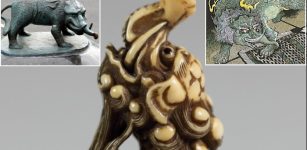 Legend Of Baku – The Dream Eater – Was It An Ancient Supernatural Being?
Featured Stories | Feb 15, 2023
Legend Of Baku – The Dream Eater – Was It An Ancient Supernatural Being?
Featured Stories | Feb 15, 2023 -
 Newly Discovered Papyrus Reveals An Intriguing And Gripping Criminal Case From The Roman Empire
Archaeology | Jan 29, 2025
Newly Discovered Papyrus Reveals An Intriguing And Gripping Criminal Case From The Roman Empire
Archaeology | Jan 29, 2025 -
 Rare Find Provides New Insight Into Etruscan Life Under Rome
Archaeology | Sep 3, 2022
Rare Find Provides New Insight Into Etruscan Life Under Rome
Archaeology | Sep 3, 2022 -
 ‘The Battle Of The Tooth Worm’ – Strange Ivory Carving
Artifacts | Aug 11, 2015
‘The Battle Of The Tooth Worm’ – Strange Ivory Carving
Artifacts | Aug 11, 2015

